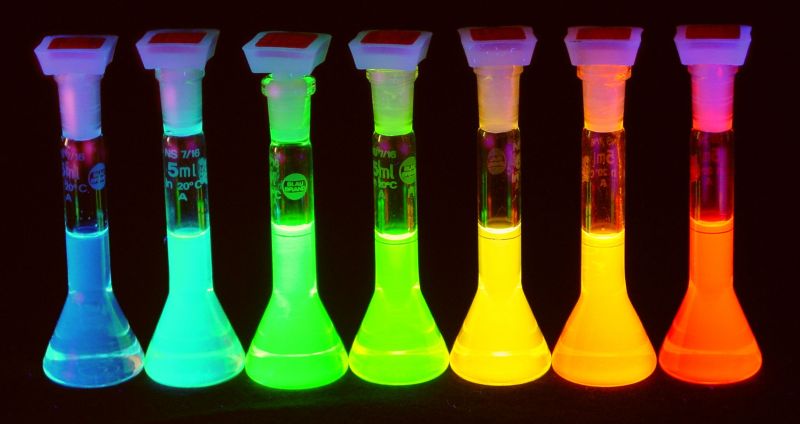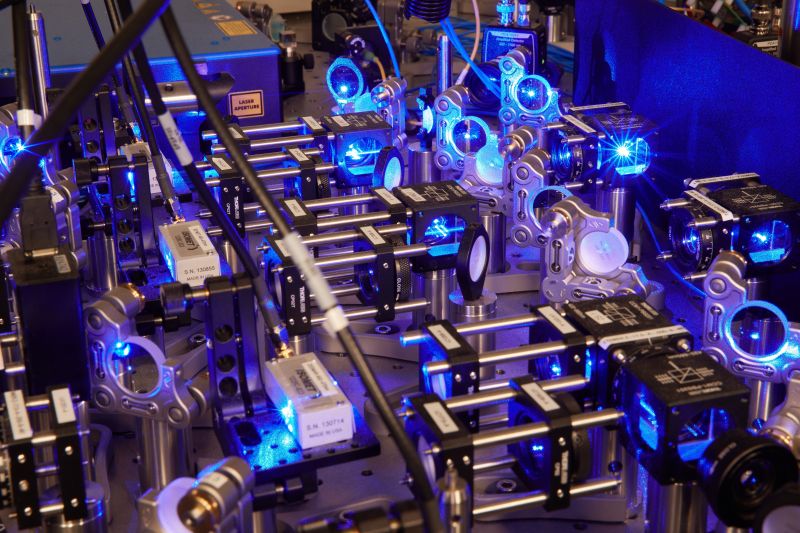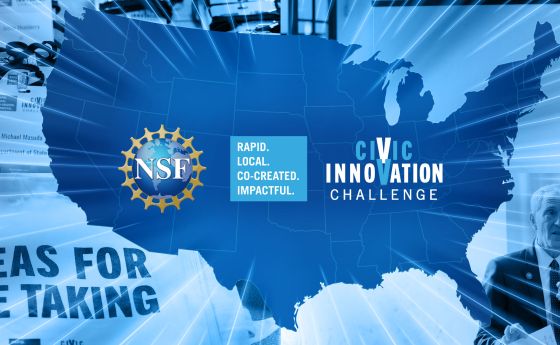
Concepts in quantum materials and computing: From dreams toward use
You likely have never heard a student exclaim at a school career day, "I want to go into quantum science!" But like the advances in computer science over the past 75 years that have made computers part of our everyday lives, quantum science is starting to emerge from the physics lab impacting a range of practical technologies. This transformation — catalyzed by the U.S. National Science Foundation — is beginning to deliver real-world benefits.
The first quantum science projects funded by NSF date back almost 70 years. Since then, NSF-supported quantum science has produced advancements such as quantum dot nanotechnology used in TV screens (resulting in a Nobel Prize in Chemistry in 2023), advanced lasers and other innovations impacting today's world. And the list is growing as we learn to harness the power of quantum materials and systems. Not only will quantum science continue to give us new tools to better understand and navigate the world, but the science itself and the technology that stems from it will open up new directions, impact our lives, and catalyze economic opportunities, all the while giving rise to an emerging workforce.
What is the basis for quantum science?
Since the late 1800s, physicists have been studying the special behavior of materials at very small scales of matter, which exhibit more complex properties than classical physics could describe. The most basic example of a classical state is an on/off switch, which is always in a well-defined state.
But quantum systems can be in several states at once, referred to as "superposition," where the quantum state is the sum of all the distinct states — but all coexisting at the same time. Conceptually, think of it like a person's identity — under classical on/off switches, you would only be in one part of your identity at any given time: for example, a parent, a worker or a neighbor. Most of the time, we exist in all of these identities summed together, with parts being more available at times but easily influenced by the other aspects of our identity: a superposition of multiple personalities.
What can be done with quantum science?
Quantum science has been making rapid progress.
The last few years have witnessed a burst in quantum sensors: tools that measure or respond to small quantum changes in minute particles. NSF has long supported the research that developed the field of quantum sensors and, more recently, the work that is bringing them into use. Quantum-based sensors are currently incorporated into a wide range of products and are part of today's development of navigational tools being used in autonomous vehicles, atomic clocks for precision timing, detection of earthquakes, food spoilage and many more things on the cusp of being available.
Potential uses go far beyond sensors as well: recent breakthroughs are pushing the concept of quantum computing into the realm of the possible. Traditional computing systems, from the most basic ones used in older, simpler machines to the powerful computers available today, use a binary system, where each piece of information is stored as an on/off switch called a bit.
Through advances in classical computer technology, computers have become smaller and faster despite still being centered on binary systems. However, because all the information transfer still relies on that one switch to communicate each tiny bit of information, there are limitations on how quickly and how traditional computers can process complex information.
This is where quantum physics comes in!
Instead of the on/off bits in the traditional computer, quantum computing relies on information transfer between "qubits" — quantum materials that can hold the sum of all the intermediate states of information (i.e., are in superposition) and more rapidly and quickly impact information flow. This breaks through the limitations imposed by how binary computers operate.
In addition to expanding the computing capacity, quantum computers should be able to function much more rapidly due to entanglement. We still do not understand how two physically separate qubits can be intrinsically linked, as has been shown by entanglement. This unknown is part of the research underway by scientists working to make the transfer of information between qubits reliable enough to be useful. To do this, NSF and others have consistently funded the tight collaborations between U.S. and international scientists, leading to giant leaps forward and even recognition by the 2023 Physics Nobel laureates — Anton Zeilinger, Alain Aspect and John Clauser.
Why NSF? The reality of the quantum computing field is that translational efforts of quantum science applications will push the field even further, not to mention revolutionize the tools available to virtually every science discipline. And NSF is uniquely positioned to support the full spectrum of research, from foundational to use-inspired to translational.
It takes an ecosystem to build a quantum computer
Quantum-based computing will not likely immediately have an advantage over the day-to-day capability of regular computers. But tackling bigger questions, ones that require unfathomable amounts of calculations, like advanced biological imaging, energy optimization and climate sustainability, is where the limits of classical computing hit a wall that quantum computing might be able to barrel through. Building quantum computing for groundbreaking future uses requires harnessing the powerful foundational quantum science that has long been funded by NSF and also pursuing use-inspired and translational research into the future.
As an example, quantum "testbeds" can allow for critical quantum experimentation, advancing quantum science as well as specific quantum-enabled applications. Testbeds constitute one of the major parts of the ecosystem being facilitated by NSF and other agencies. By investing in these resources, NSF can democratize access into quantum science and spur new innovations that can be transitioned into practical use cases.
The NSF Directorate for Mathematical and Physical Sciences, Directorate for Engineering, and Directorate for Computer and Information Science and Engineering have been building collaborative networks of multidisciplinary quantum-related scientists into Quantum Leap Challenge Institutes (QLCIs) as well as funding projects to specific groups of scientists to push the science forward. The newly established Technology, Innovation and Partnerships (TIP) directorate has hosted numerous Convergence Accelerator projects to further prototyping, piloting, and testing. Many startup companies built on NSF-funded science successfully gained support from the NSF Small Business Innovation Research and Small Business Technology Transfer (SBIR and STTR) programs, as well as follow-on funding from other federal agencies such as the U.S. Departments of Energy, Commerce and Defense.
To gain an advantage in the leap into quantum technology, a well-trained U.S. workforce must be available. NSF is working to help provide such a workforce, using investment frameworks such as the NSF Expanding Capacity in Quantum Information Science and Engineering program and the QLCIs to bolster the involvement of all types of institutions, including community colleges, primarily undergraduate institutions, and minority-serving institutions — even reaching elementary to high schools. The nonprofit QuSTEAM spun out of a NSF Convergence Accelerator project and is specifically geared toward re-imagining more effective ways to bring undergraduates at two- and four-year institutions into the quantum workforce by re-vamping the curriculum and partnering with quantum-related industries. The National Q-12 Education Partnership was jointly established by NSF and the National Quantum Coordination Office in the White House Office of Science and Technology Policy as a platform to disseminate quantum information science teaching and learning materials.
We are surrounded by quantum physics, but harnessing the power of quantum sciences has just begun and promises to bring so much more. NSF looks forward to seeing new technologies emerge from quantum science.






